
Welcome to Hyperion Records, a British classical label devoted to presenting high-quality recordings of music of all styles and from all periods from the twelfth century to the twenty-first.
Hyperion offers both CDs, and downloads in a number of formats. The site is also available in several languages.
Please use the dropdown buttons to set your preferred options, or use the checkbox to accept the defaults.

| The Tallis Scholars, Peter Phillips (conductor)» More |
| The Sixteen, Harry Christophers (conductor)» More |
| The Monteverdi Choir, Sir John Eliot Gardiner (conductor)» More |
| Contrapunctus, Queen's College Choir Oxford, Owen Rees (conductor)» More |
| St John's College Choir Cambridge, Andrew Nethsingha (conductor), Simon Grant (bass)» More |






from notes by Peter Phillips © 2015
extrait des notes rédigées par Peter Phillips © 2015
Français: Marie-Stella Pâris
aus dem Begleittext von Thomas Phillips © 2015
Deutsch: Viola Scheffel
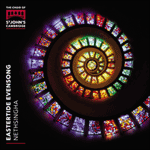 Eastertide Evensong Eastertide EvensongSt John's first live Evensong album, 'Ash Wednesday', marked the period of Lent and reflected the tradition of the organ remaining silent. Now with 'Eastertide Evensong', organists rejoin choir in a blaze of rejoicing.» More |
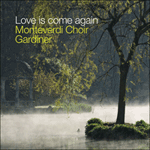 Love is come again Love is come again‘This personal selection of music for Easter from the 11th to the 20th centuries tells the story of the Resurrection and Christ's appearances to his disciples. It is based on my experience of compiling and directing the music for a mimed Easter pl ...» More |
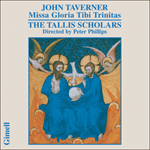 Taverner: Missa Gloria tibi Trinitas Taverner: Missa Gloria tibi TrinitasThe classic 1984 recording of John Taverner's Missa Gloria tibi Trinitas, 'Leroy' Kyrie and Dum transisset Sabbatum was made in Merton College Chapel, Oxford, and is combined here with the 1993 recording of his Western Wind Mass that was made in S ...» More |
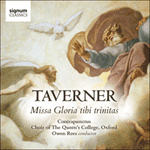 Taverner: Missa Gloria tibi Trinitas & other works Taverner: Missa Gloria tibi Trinitas & other worksOwen Rees conducts a programme centred on John Taverner's expansive Missa Gloria tibi Trinitas. Performances from early-music specialists Contrapunctus are convincingly bolstered by the voices of Queen's College Choir Oxford in this most arresting ...» More |
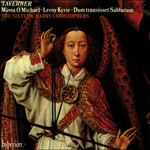 Taverner: Missa O Michael & other sacred music Taverner: Missa O Michael & other sacred music‘To sum up, it is one of the joys of being alive in the 1990s to be able to hear this incomparable music so competently and sympathetically—in fact id ... ‘There are so many special moments that if you are a Taverner fan all I can do is to recommend strongly that you sample this CD’ (CDReview)» More |
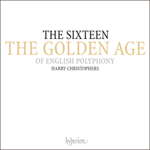 The Sixteen & The Golden Age of English Polyphony The Sixteen & The Golden Age of English PolyphonyWhen The Sixteen embarked upon their recording career back in 1982, few would have been able to predict quite how far they would go towards rehabilitating the little-known music of these four master composers of the 16th century. In this their 30t ...» More |

